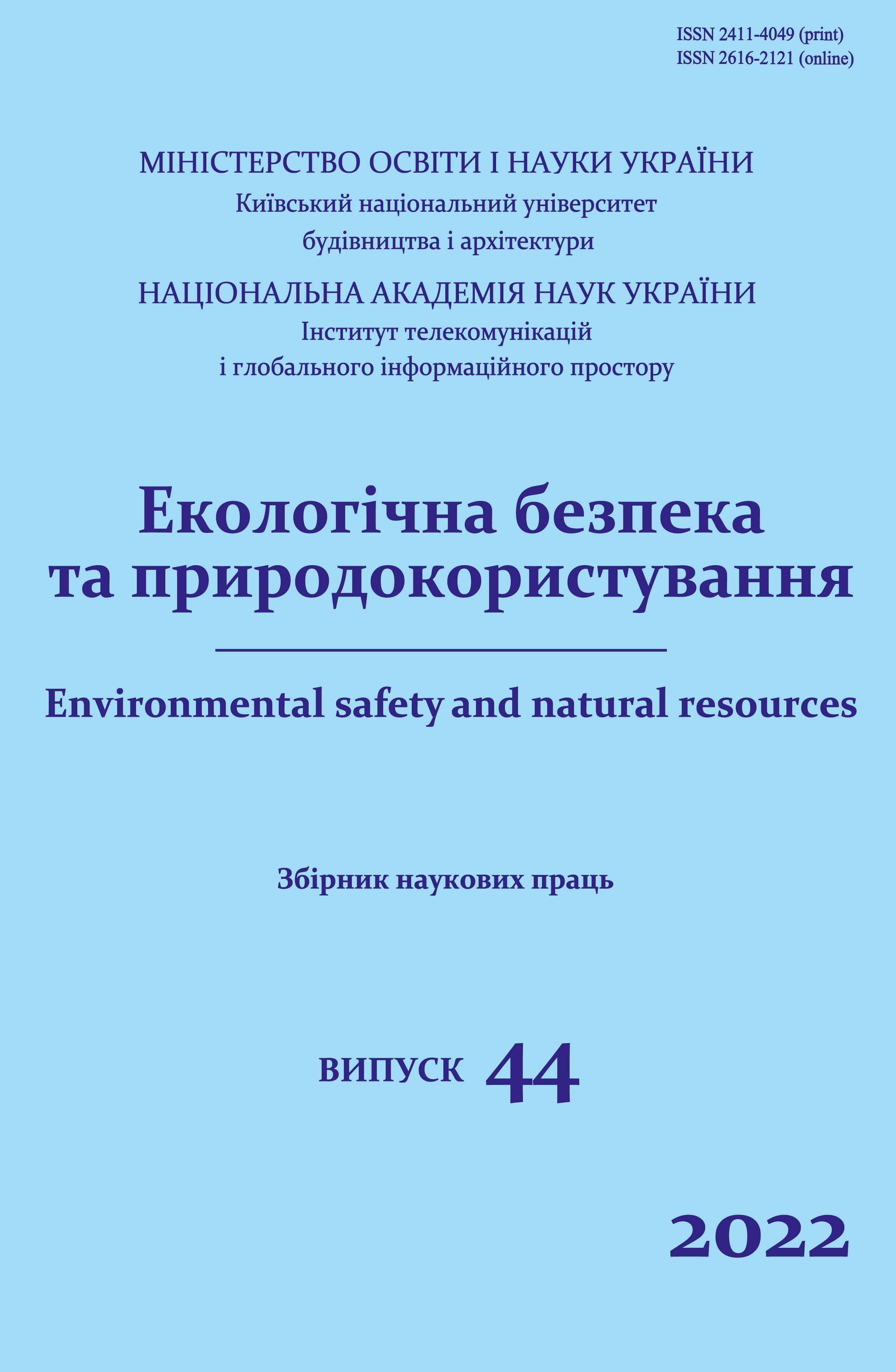Influence of military actions on the process of the formation of precipitation
DOI:
https://doi.org/10.32347/2411-4049.2022.4.5-14Keywords:
acid precipitation, single explosions, military operations, mathematical modelAbstract
This work concerns the study of the influence of military actions on the development of global ecological processes, in particular, the fall of acid rain from individual single explosions. A mathematical model is proposed, which takes into account the emission of pollutants into the subcloud washout zone and the kinetics of the condensation process. The concentration of combustion products in the atmosphere at the level of three to five diameters of the explosion area (the area of the formed explosion funnel) is found using the theory of a convective jet from a warm source to the environment. At the same time, we determined the speed of warm air that rises above the area of the explosion, the average temperature in the transition section of the convective jet, and the flow rate of polluted air in the upper part of the jet. The paper presents a system of dimensionless non-stationary differential equations for a high unshaded source, which can be used to determine the dispersion of the main acid-forming substances in the Boussinesq approximation with the variables "eddy velocity – current function – temperature – concentration" with appropriate initial and boundary conditions. Sulfuric anhydride was considered as an example of the main acid-forming substances and the most dangerous and toxic compounds of explosion products. The proposed mathematical model can be used to forecast the possible fall of acid rain on the territories adjacent to single explosions, thereby making a forecast of changes in environmental risk as a result of military operations for the environment and the population. and will make it possible to determine the zones of influence and dispersion from the place of the explosion.
References
Bondar, O.I., Ulytskyi, O.A., & Ermakov, V.M. (2018). Report on the results of studying the ecological situation in Donetsk and Luhansk regions. Kyiv [in Ukrainian].
About the state of pollution of the natural environment in Kyiv and the Kyiv region according to the observations of the CSO named after B. Sreznevskyi. Retrieved from: http://cgo-sreznevsky.kiev.ua [in Ukrainian].
Yuesi Wang, Wenpeng Yu, Yuepeng Pan, & Dan Wu (2012). Acid neutralization of precipitation in Northern China. Journal of the Air & Waste Management Association, 62(2), 204-211. https://doi.org/10.1080/10473289.2011.640761.
Xiao, J. (2016). Chemical composition and source identification of rainwater constituents at an urban site in Xi’an. Environ Earth Sci, 75(209). https://doi.org/10.1007/s12665-015-4997-z.
Liuyi Zhang, Baoqing Qiao, Huanbo Wang, Mi Tian, Jian Cui, Chuan Fu, Yimin Huang, & Fumo Yang (2018). Chemical Characteristics of Precipitation in a Typical Urban Site of the Hinterland in Three Gorges Reservoir, China. Journal of Chemistry. Environmental Biogeochemistry of Elements and Emerging Contaminants. https://doi.org/10.1155/2018/2914313.
Khalid A. Rasheed, Zaid A. Azeez, & Ali A. Al-Salhy (2016). Effects of Air Pollutants from Al-Dura Power plant in the Surrounding Area South Baghdad. J. Int. Environmental Application & Science, 11(2), 170-175.
Mirzaei, S., Hashemi, H., & Hoseini, M. (2018). Concentration and potential source indentification of trace elements in wet atmospheric precipitation of Shiras, Iran. Journal of Environmental Health Science and Engineering, 16, 229-237. https://doi.org/10.1007/s40201-018-0310-x.
Voloshkina, O., Sipakov, R., Zhykova, O., & Bereznitska, J. (2018). A study of air pollution with formaldehyde along the highways in Kyiv city. USEFUL, 2, 1-7 [in Ukrainian].
Klimova, I., & Sipakov, R. (2019). Influence of meteorological factors on the secondary contamination of atmospheric air by formaldehyde (on example of city of Kyiv). Scientific Letters of Academic Society of Michal Baludansky, Kosice, (Slovakia), 7(2/2019), 75–86. https://doi.org/10.32557/issn.2640-9631/2019-1.
Rudakov, D.V. (2004). Mathematical models in environmental protection: Study guide. Donetsk: Dnipropetrovsk University Publishing House [in Ukrainian].
Methodological guidelines for forecasting meteorological conditions for the formation of air pollution levels in cities of Ukraine. Retrieved from: https://meteo.gov.ua/files/content/docs/meteo_kerdoc/%D0%9A%D0%9452.9.4.01-09.pdf.
Gvozdyakov, D.V., Gubin, V.E., Gromov, A.A., Tanishev, A.O., & Shvab, S.A. (2017). Numerical Estimation of the Formation Process of Anthropogenic Precipitation in the Atmosphere. Retrieved from: https://www.researchgate.net/publication/311777904_Numerical_Estimation_of_the_Formation_Process_of_Anthropogenic_Precipitation_in_the_Atmosphere. https://doi.org/10.1051/matecconf/20179101005.
Downloads
Published
How to Cite
Issue
Section
License
Copyright (c) 2022 O.S. Voloshkina, A.V. Goncharenko

This work is licensed under a Creative Commons Attribution 4.0 International License.
The journal «Environmental safety and natural resources» works under Creative Commons Attribution 4.0 International (CC BY 4.0).
The licensing policy is compatible with the overwhelming majority of open access and archiving policies.

